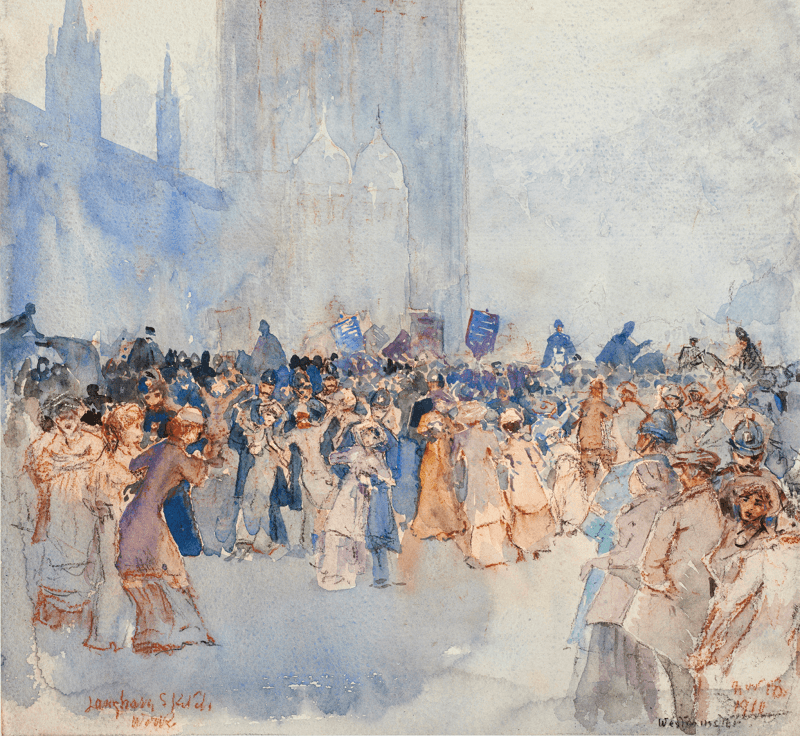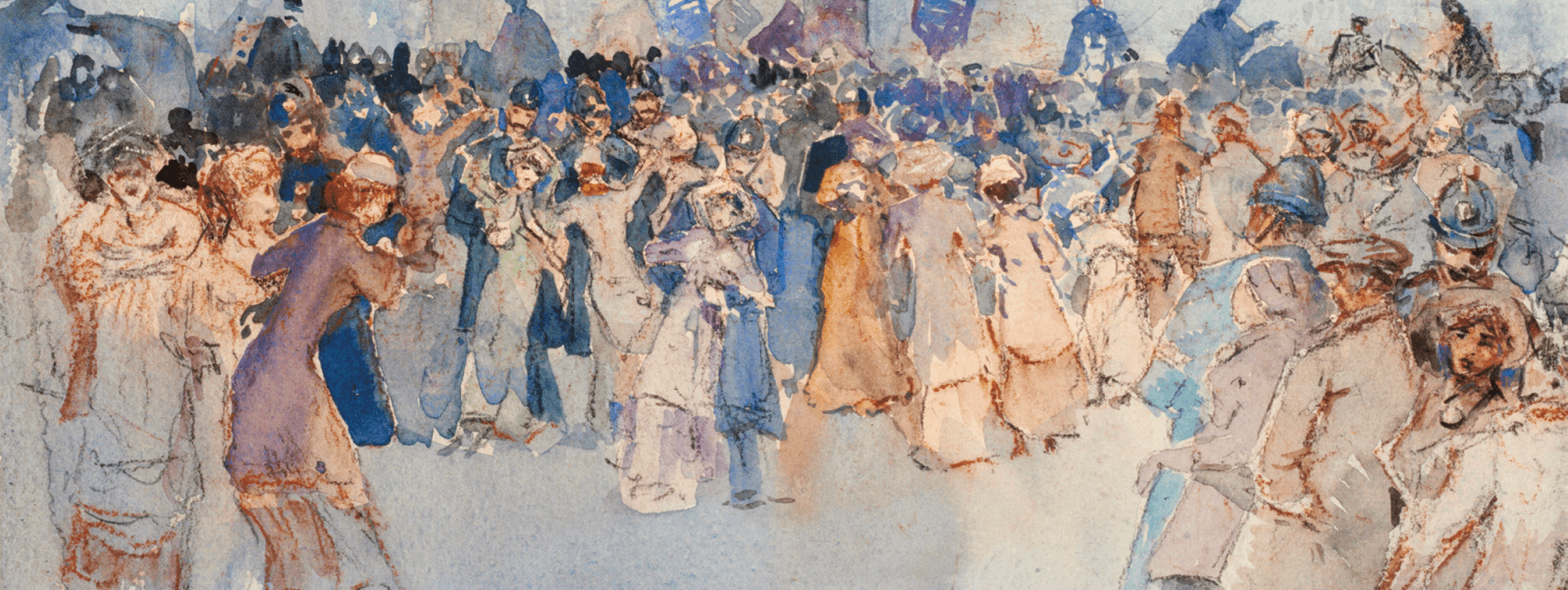William Monk (1863–1937) by Alison Bailey, Samantha Free, and Martin Pounce

One of England’s most famous architectural etchers of the late nineteenth and early twentieth century, professional artist William Monk, lived in Amersham from 1903 to 1915 just when he was gaining a worldwide reputation. He worked as an etcher, a woodcut engraver and a painter in oils and watercolours. A writer in the Art Journal stated that the artist was one of the finest painter-etchers in Great Britain “his work contains all the varied qualifications for the successful delineation of architecture – faithful reproduction of line. Appreciation of colour as well as of form, and the power of seeing and depicting that which to the ordinary observer is not perceptible”.
Until the late 19th century development of the halftone process which enabled photographs to be reproduced by the printing process, pictures in magazines and newspapers were engravings. The painstakingly hand process of producing woodcuts or wood-engravings were often copied from photographs.
He created slightly over one hundred original etchings during his career: most being views of London, New York, Eton, Oxford, Winchester and Durham. Well-travelled, some of Monk’s best-known etchings are of New York and the Panama Canal. He also worked in Rome and Venice which he often depicted in watercolours. He was elected an Associate of the Royal Society of Painter-Printmakers in 1894 and a full member in 1899. He was a prolific exhibitor showing at the Abbey Gallery, Baillie Gallery, Beaux Arts Gallery, Fine Art Society, Grosvenor Gallery, Glasgow Institute of the Fine Arts, International Society of Sculptors, Painters & Gravers, Walker Art Gallery, Manchester Academy of Fine Arts, Royal Academy of Arts, Royal Institute of Painters in Water Colours and Walker’s Gallery. He was also a member of the Society of Graver-Printmakers in Colour and acted as Vice-President shortly before his death.
His drawings and etchings often appeared in the Art Journal, and the museum has some copies in its collection. He also illustrated Kipling’s Country and presented a copy of his etching of Caernarvon Castle to King George V and Queen Mary. One of his largest plates shows St Paul’s Cathedral during Queen Victoria’s Diamond Jubilee. However, he is best remembered for his annual Calendarium Londinense -The London Almanack which contained a 12-month calendar with one of Monk’s engravings of the capital. It was published annually from 1903 until 2004.
Born in Chester, the son of gunmaker William Henry Monk, he studied art at the Chester School of Art and etching at the Antwerp Academy, Belgium. William Monk moved from Chester to London to work in one of the old Hogarth studios in 1892 and returned to Chester in 1933 to live close to his brother on the banks of the river Dee. In 1897 he took over, with his artist friend, Edward C Clifford, The Berry Art School, St John’s Wood but gave up teaching four years later to marry.
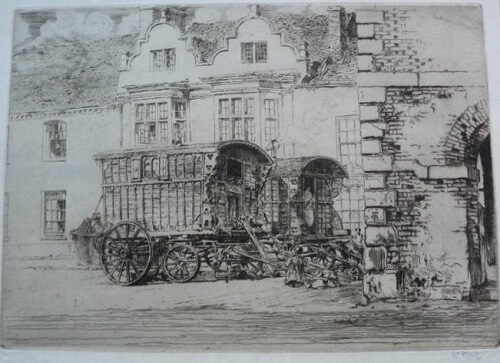
In the 1901 census he and his new bride, Jenny Agnes née Wuidart, resided in 5 Ransworth Mansions, 23 Compayne Gardens, South Hampstead. Jenny’s parents Jules and Agnes lived close by at 41 Compayne Gardens. Agnes was from Germany and Jules, from Belgium was a wealthy glass merchant. William and Jenny’s first son William Wuidart Monk was born in Hampstead in 1902 but in 1903 William Monk brought his family to live at The Gables, High Street, Old Amersham. Their youngest son Jules was born here on 4 December 1903.
The marriage to Jenny brought financial stability and the family’s security was further established in 1903 when Monk founded The London Almanack at the same time as the move to Amersham. The 35 illustrations he published (one for each year) served as a historical record of the ever-changing London. His last illustration, before he died in 1937, was the Coronation Chair in Westminster Abbey used for the coronation of George VI.
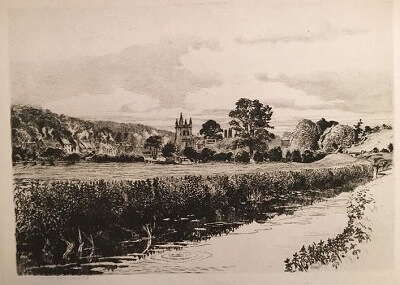
Delighted to have a famous artist in their midst, the Monk family was quickly established in the Amersham community. The Bucks Herald reported on December 23rd, 1905 that a bazaar had been held in aid of the St Mary’s Church organ and restoration fund. This included an exhibition ‘consisting of a series of living pictures, with titles capped by quotations from the works of Shakespeare …. The characters were chiefly sustained by Mrs Monk …. The exhibition which was under the direct superintendence of Mr W Monk, who is well-known locally for his artistic abilities …’

Etching by Monk of Amersham’s Market Hall courtesy of https://www.the-saleroom.com/
In 1906 William Monk was included in a Bucks Examiner list of the Grand Jury members at the Bucks Quarter Sessions held at the County Hall in Aylesbury. That same year, he registered as a member of the Carrington Lodge of Freemasons. (The Carrington Lodge (No. 2421) was founded in Amersham and consecrated on 30 April 1892; it moved to Marlow in 1978). The Bucks Herald reported on 18 January 1908 the presence of William Monk at the opening of the new Conservative Club House in Amersham and his election as a new vice president of the club.
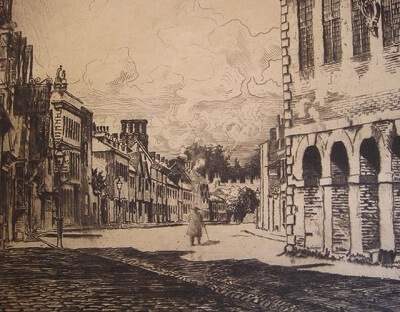
Detail of Monk’s Market Hall etching showing Amersham High Street courtesy of https://www.the-saleroom.com
The railway meant that Monk could easily travel between Amersham and London for work and in November 1910 we know that he witnessed the suffragette riot outside the Houses of Parliament known as ‘Black Friday’. He illustrated (see below) this historic event in a lovely watercolour and pastel drawing recently found in the Museum of London’s Suffrage Collection.
In 1910 William Monk had joined the committee of the newly formed Chesham Bois and District Association. Henrietta Busk was treasurer of the new group which had been formed to protect Chesham Bois Common particularly from the many heavy carts crossing the common taking materials to building sites in Chesham Bois and Amersham-on-the-Hill. Since the arrival of the railway new houses were springing up all around the common. Indeed, William Monk had just moved his family to a newly built Arts and Crafts style house, The Dial House. This house is still on the corner of Chestnut Lane and Sycamore Road just opposite the common. It has a distinctive lychgate and a large garden. A letter to the Bucks Examiner of Sept 28th 1910 from W Monk of The Dial House refers to an earlier article about water softening and how much Mr Monk hopes that the water companies will apply water softening techniques to the supply for all homes in the district.
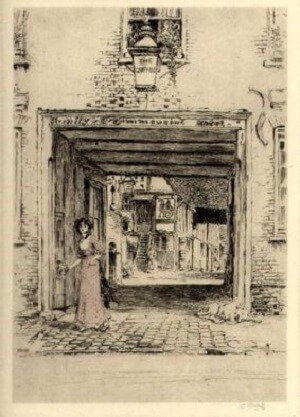
In 1915 tragedy struck the family when 11 year old Jules died, and shortly afterwards, and perhaps because of this, The Dial House was sold and the family returned to London. In the Post Office London Directory 1915 William Monk is listed living in 72 New Bond Street. In subsequent listings in 1920, 1925 and 1930 his address is given as 118 New Bond Street. However the family did not break all ties with Amersham as Jenny’s parents, Agnes and Jules had moved to The Grange, Chesham Bois which at that time fronted the Chesham Road to the west of Chesham Bois Common. The Monks may have used this as a weekend retreat as the Wuidarts lived here their until their deaths in 1923 (Agnes) and 1932 (Jules).
In 1933 the Monks retired to William’s home town, Chester, where he had been made a freeman of the city. They settled in an old house known as Tudor Lodge on the banks of the river Dee with William’s brother and here William died on 7 April 1937, age 73. His effects were valued for probate at £3907 5s 10d.
Tributes were published nationwide with news of the “Passing of Mr William Monk – A Great Painter Etcher – A man who had no enemies”, The Chester Observer, 10 April 1937, “Famous Etcher Dead – Chester Man Who Gained Worldwide Reputation”, The Liverpool Echo, 8 April, 1937 and “Late Mr William Monk – Artist Who Recorded Changing London”, The Scotsman, 9 April, 1937.
The Chester Observer, of 10 April 1937 said that he “devoted his life to painting and etching, and his works were always eagerly sought. His name will, of course, rest largely on etching, and by his passing that phase of the world of artists has lost a truly great master. He was an artist of great charm of manner, and one who had no enemies. He was never known to say an unkind word, and he was loved by all who knew him”.
Examples of William Monk’s work are held in the collections of the British Museum, Victoria and Albert Museum and the Imperial War Museum. In 2013 the 150th anniversary of the artist’s birth was marked at Chester’s Grosvenor Museum with the exhibition A Vision of England: Etchings by William Monk.
